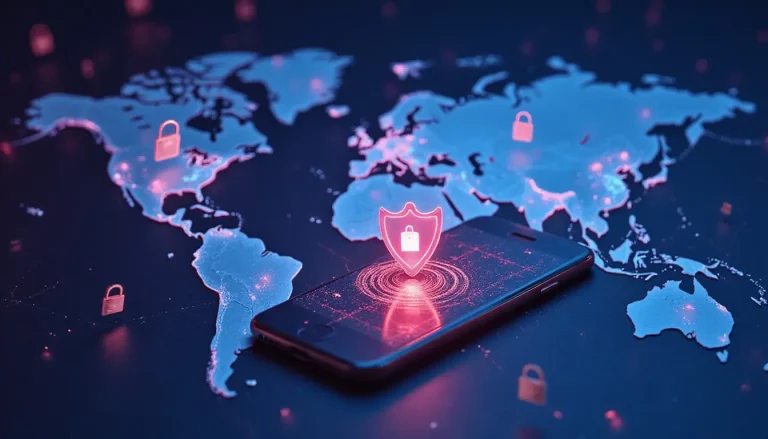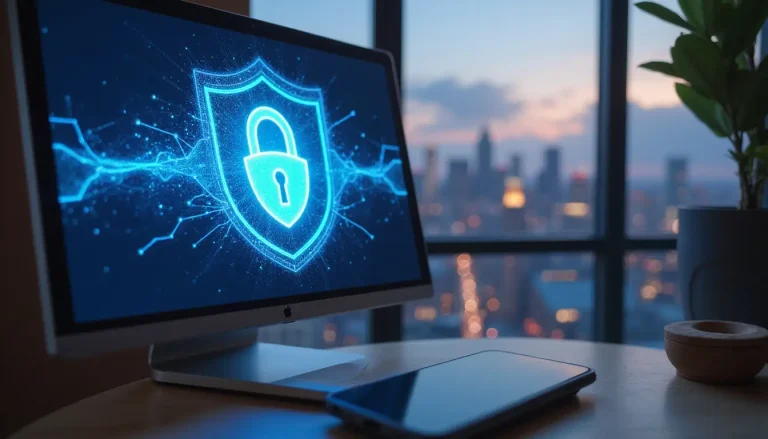Enhancing Mobile Security
Protect Your Mobile Devices
Enhancing mobile security is paramount in today’s digital landscape, where smartphones and tablets are essential tools. Protecting personal and sensitive data on these devices from cyber threats like malware, phishing, and data breaches is increasingly critical. As mobile user numbers grow, so does the sophistication of cybercriminals targeting them. A strong mobile cybersecurity strategy, encompassing antivirus software, regular updates, and user education, is vital. By understanding common threats and adopting effective security practices, individuals and organizations can safeguard their mobile devices, ensuring a secure experience and protecting valuable data.

Key Takeaways
- Mobile cybersecurity involves protecting devices from various digital threats.
- Common threats include malware, phishing, and unsecured Wi-Fi connections.
- Adopting strong passwords and enabling two-factor authentication are critical best practices.
- Utilizing security apps can significantly enhance device protection and privacy.
- Regular software updates are essential for patching vulnerabilities and improving security.
Understanding Mobile Cybersecurity: An Overview
In today’s digital age, where smartphones and tablets have become integral to our daily lives, understanding mobile cybersecurity is more critical than ever. Mobile cybersecurity refers to the protection of personal and sensitive information on mobile devices from cyber threats, such as malware, phishing attacks, and data breaches. As the number of mobile users continues to rise, so does the sophistication of cybercriminals targeting these devices. A robust mobile cybersecurity strategy involves using various security measures, including antivirus software, regular updates, and user education. By becoming aware of common threats and implementing effective security practices, individuals and organizations can safeguard their mobile devices, ensuring a secure mobile experience and protecting their valuable data from prying eyes.
The more places you go, the more you are at risk from cyber threats. Protect your mobile devices before it is too late!
Common Threats to Mobile Devices
In today’s digital age, mobile devices are an essential part of our daily lives, making mobile cybersecurity a critical concern for users worldwide. Common threats to mobile devices include malware, which can infiltrate smartphones through malicious apps or unsolicited downloads, often leading to data breaches and personal information theft. Phishing attacks, another prevalent threat, can deceive users into revealing sensitive information by masquerading as legitimate sources. Additionally, unsecured Wi-Fi networks pose significant risks, as cybercriminals can easily intercept data being transmitted over such connections. Furthermore, outdated operating systems and apps leave vulnerabilities that hackers can exploit, underscoring the importance of regular updates for mobile cybersecurity. By understanding these common threats, users can take proactive measures to safeguard their devices and personal information.
Best Practices for Stronger Mobile Cybersecurity
In today’s digital age, mobile cybersecurity has become a paramount concern for both individuals and businesses. With the increasing reliance on smartphones and tablets for a variety of tasks—from online banking to social networking—the risk of cyber threats is ever-present. To enhance your mobile cybersecurity, it is essential to adopt best practices that safeguard your devices against potential attacks. First, ensure that you keep your mobile operating system and applications updated, as these updates often include critical security patches. Additionally, consider employing a reputable mobile security app that provides comprehensive protection against malware and phishing attempts. Be cautious when connecting to public Wi-Fi networks; using a virtual private network (VPN) can encrypt your data and protect your privacy. Finally, avoid downloading apps from untrusted sources and always read the app permissions before installation. By implementing these best practices, you can significantly strengthen your mobile cybersecurity defenses and enjoy a safer mobile experience.

Utilizing Mobile Security Apps and Features
In today’s fast-paced digital landscape, mobile cybersecurity has become a critical concern for users worldwide. With the increasing reliance on smartphones for everything from banking to personal communications, utilizing mobile security apps and features is essential to safeguard sensitive information. Mobile security applications offer a range of protective measures such as malware detection, secure browsing, and VPN services, which help to shield users from potential threats. Moreover, taking advantage of built-in features like biometric authentication and automatic software updates significantly enhances the security of mobile devices. By prioritizing mobile cybersecurity, users can enjoy greater peace of mind knowing their personal data remains protected against cybercriminals.
The Importance of Regular Software Updates
In today’s digital landscape, ensuring robust mobile cybersecurity is more crucial than ever, and one of the most effective strategies for maintaining that security is the practice of regular software updates. Software developers routinely release updates that not only patch known vulnerabilities but also enhance functionality and improve overall system performance. By consistently applying these updates, users can protect their devices from emerging cyber threats that evolve in sophistication and frequency. Outdated software often serves as low-hanging fruit for cybercriminals seeking to exploit weaknesses; therefore, prioritizing mobile cybersecurity through timely updates helps safeguard personal and sensitive information from potential breaches, ultimately fostering a safer mobile experience.
Frequently Asked Questions
What is mobile cybersecurity?
Mobile cybersecurity refers to the protection of smartphones, tablets, and other mobile devices from various cyber threats, including malware, hacking, and data breaches. It involves implementing security measures to safeguard personal and sensitive information.
What are some common threats to mobile devices?
Common threats to mobile devices include malware infections, phishing attacks, unsecured Wi-Fi networks, and data theft. These threats can compromise user privacy and lead to financial loss, or worse! With evolving threats, enhancing mobile security is a continuous process.
‘The only way to ensure privacy is by encrypting your data and using a VPN, because freedom is nothing without the security of your personal information.’ – Anonymous
What are the best practices for improving mobile cybersecurity?
Best practices include using strong, unique passwords, enabling two-factor authentication, regularly updating software, avoiding public Wi-Fi for sensitive transactions, and being cautious with app permissions.
How do mobile security apps help in enhancing cybersecurity?
Mobile security apps can detect and prevent malware, offer secure browsing, protect against phishing attacks, and provide various privacy tools. They play a crucial role in enhancing mobile security.
Why are regular software updates important for mobile security?
Regular software updates are essential because they often include security patches that fix vulnerabilities. Keeping your software up-to-date reduces the risk of exploitation by cyber threats.
Conclusion
In essence, navigating the complexities of mobile cybersecurity demands a proactive and informed approach. By understanding the evolving threats, implementing robust security measures, and staying vigilant with regular updates and best practices, individuals and organizations can significantly fortify their mobile defenses. Ultimately, embracing a culture of continuous learning and adaptation is key to ensuring a secure and reliable mobile experience in an increasingly interconnected world.



